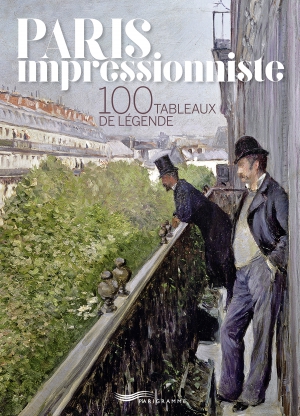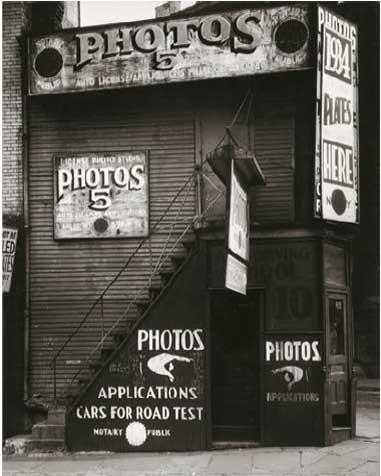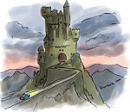 Q : I live in the Midwest and read your column on the Internet. My husband has been offered a transfer to his company’s European headquarters. At first I was excited about the idea of living in Paris, but I recently read a troubling article concerning expat marriage breakups. Is it true that couples abroad experience lots of relationship problems?
Q : I live in the Midwest and read your column on the Internet. My husband has been offered a transfer to his company’s European headquarters. At first I was excited about the idea of living in Paris, but I recently read a troubling article concerning expat marriage breakups. Is it true that couples abroad experience lots of relationship problems?
Continue reading “Do Expat Couples Have More Problems?”
Ali Kazma’s “Souterrain”

The Jeu de Paume in Paris is showing Turkish lens-based artist Ali Kazma’s recent non-narrative documentary videos (until January 21). Kazma, who studied in the States at the New School, represented Turkey in the 55th International Art Exhibition, la Biennale di Venezia. His video installations —usually five to fifteen minutes—are a melange of various situations and social types… a kind of update on August Sanders. In a recent interview with ARTE he described the documentary nature of his work as an effort to create a “poetic archive of the human condition.” Kazma’s videos are an excellent compliment to the other Jeu de Paume exhibition currently on devoted to legendary “New Objectivity” photographer Albert Renger-Patzsch. Continue reading “Ali Kazma’s “Souterrain””
Albert Renger-Patzsch’s “Things”

A major exhibition of around 190 photographs revisits the work of the German photographer Albert Renger-Patzsch (1897-1966), whose photographs are associated with the “New Objectivity” genre ( to January 21, 2018). His typologies and industrial landscapes have influenced the documentary style of several generations of photographers including Bernd and Hilla Becher as well as Andreas Gursky. Continue reading “Albert Renger-Patzsch’s “Things””
The Mistress of Paris
 Take a walk on the wild side of Belle Epoque Paris with this biography of Emile-Louise Delabigne, known as countess Valtesse de la Bigne (1848-1910). who was a legendary French courtesan and demi-modaine. Her lovers included countless painters, writers and politicians, while her affairs with women caused a scandal in turn-of-the-century Paris. She was painted by Édouard Manet and inspired Émile Zola, who immortalized her in his scandalous novel “Nana.” Continue reading “The Mistress of Paris”
Take a walk on the wild side of Belle Epoque Paris with this biography of Emile-Louise Delabigne, known as countess Valtesse de la Bigne (1848-1910). who was a legendary French courtesan and demi-modaine. Her lovers included countless painters, writers and politicians, while her affairs with women caused a scandal in turn-of-the-century Paris. She was painted by Édouard Manet and inspired Émile Zola, who immortalized her in his scandalous novel “Nana.” Continue reading “The Mistress of Paris”
Paris Impressions
 A new bilingual book “Paris Impressionniste” illustrated with 100 paintings brings together some of the images of this mythical city many of us carry in our head, such as Camille Pisarro’s “Le Pont Royal” or Caillebotte’s “Rue de Paris, temps de pluie,” or Edouard Manet’s legendary “un bar aux Folies Bergere” When Humphrey Bogart told Ingrid Bergman in Casablanca we’ll always have Paris. he wasn’t talking about the Paris of surly bureaucrats, strikes and traffic jams, but the Paris of Manet’s lovers in “Chez le pere Lathuille”… the romantic Paris.
A new bilingual book “Paris Impressionniste” illustrated with 100 paintings brings together some of the images of this mythical city many of us carry in our head, such as Camille Pisarro’s “Le Pont Royal” or Caillebotte’s “Rue de Paris, temps de pluie,” or Edouard Manet’s legendary “un bar aux Folies Bergere” When Humphrey Bogart told Ingrid Bergman in Casablanca we’ll always have Paris. he wasn’t talking about the Paris of surly bureaucrats, strikes and traffic jams, but the Paris of Manet’s lovers in “Chez le pere Lathuille”… the romantic Paris.
Monet painted smoke clouding the Gare Saint-Lazare, Renoir captured the Pont Neuf’s reflections in the Seine, Pissarro portrayed Avenue de l’Opéra from his hotel room, Manet immortalized waitresses in a café at Pigalle… Between its river and its tall skies, the French capital lacked neither nature nor textures for artists intent on capturing the magic of light in an urban setting. Plus the city with its street life, workers, cafes and entertainment was an extremely happening fin de siecle place to paint. Continue reading “Paris Impressions”
People Here Answer Me in English…
 Q: I had always heard that the French resent foreigners who don’t speak their language, so when I moved to Paris two years ago, I enrolled in a class almost before I had finished unpacking. My skills are pretty good now, so it really annoys me that many people here answer me in English as soon as I open my mouth. Not only does it deprive me of the chance to improve, but also it feels like a putdown. Do you have a good comeback to suggest to me the next time this happens? Continue reading “People Here Answer Me in English…”
Q: I had always heard that the French resent foreigners who don’t speak their language, so when I moved to Paris two years ago, I enrolled in a class almost before I had finished unpacking. My skills are pretty good now, so it really annoys me that many people here answer me in English as soon as I open my mouth. Not only does it deprive me of the chance to improve, but also it feels like a putdown. Do you have a good comeback to suggest to me the next time this happens? Continue reading “People Here Answer Me in English…”
Magnum’s Analog Recovery at Le Bal

The legendary Magnum photo agency, founded in 1947 by Robert Capa, David “Chim” Seymour, Henri Cartier-Bresson and George Rodger, is an international photo cooperative owned by its members. This year marks the 70th anniversary for the famed photography agency and the completion of its Paris archive. To celebrate Le Bal presents “Magnum Analog Recovery” an exhibition of work from Magnum’s Paris archives that spans from the agency’s creation in 1947 to 1977. This collection—stored in Paris as paper prints— brings together “press” photos distributed to newspapers and magazines. Continue reading “Magnum’s Analog Recovery at Le Bal”
Walker Evans Paris Retrospective

The Pompidou Center revisits the work of one of the 20th century’s most influential photographers with an extensive Walker Evans’ (1903-1975) retrospective. His signature style with its attention to quotidian detail became a major photography reference for serious students of photography. This is the first major retrospective of his work in France (until August 14, 2017). Continue reading “Walker Evans Paris Retrospective”
Burgundy Summertime Blues
 Q Every year we spend our vacation “en famille,” with my French husband’s parents at their large “manoir” in Burgundy. Life there is pleasant but highly ritualized – meals at set times in a dark dining room – never outside, lots of “no-no’s” for our children and obligatory mass on Sundays. My husband doesn’t understand why I’m eager to find other solutions for our long vacation. He sees this place as hassle-free, ideal for our kids, a way to connect with his extended family and to save money. He says that his parents would be extremely hurt by our refusal of their hospitality. I’m starting to dread summer vacation already.. Continue reading “Burgundy Summertime Blues”
Q Every year we spend our vacation “en famille,” with my French husband’s parents at their large “manoir” in Burgundy. Life there is pleasant but highly ritualized – meals at set times in a dark dining room – never outside, lots of “no-no’s” for our children and obligatory mass on Sundays. My husband doesn’t understand why I’m eager to find other solutions for our long vacation. He sees this place as hassle-free, ideal for our kids, a way to connect with his extended family and to save money. He says that his parents would be extremely hurt by our refusal of their hospitality. I’m starting to dread summer vacation already.. Continue reading “Burgundy Summertime Blues”
Espace EDF Revisits Video Games

Over the last fifty years video games have gone from scientific curiosities to fads to becoming one of the most popular forms of entertainment earning billions world wide dwarfing the film industry. The exhibition “Game, le jeu video a travers le temps” (History of Video Games) at the Foundation EDF revisits video games from Ralph Baer’s legendary “Brown Box” (1967) to Pac Man to mobile gaming and immersive virtual reality (until August 27). Continue reading “Espace EDF Revisits Video Games”
Mystical Landscapes at Musée d’Orsay

Wassily Kandinsky called for a spiritual revolution in his 1911 manifesto “Concerning the Spiritual in Art” so that artists might express their inner lives in abstract “non-material” terms. The exhibition “Beyond the Stars. The Mystical Landscape from Monet to Kandinsky” at Paris’ Musée d’Orsay revisits artists such as Kandinsky who during the late 19th and early 20th century attempted to evoke the transcendental in their work. Continue reading “Mystical Landscapes at Musée d’Orsay”

